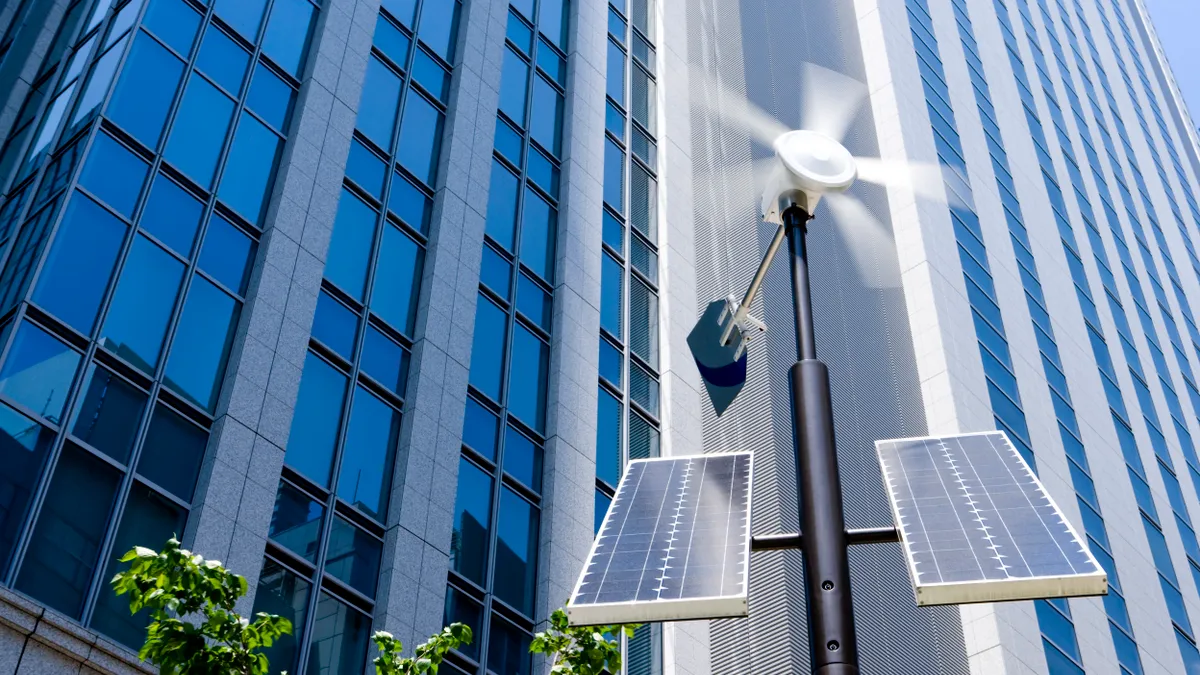Dive Brief:
- Transforming energy demand through actionable interventions can help buildings reduce their energy intensity by as much as 38% relative to current levels, according to a January 2024 white paper released by the World Economic Forum and PwC.
- Implementing energy savings and efficiency measures can potentially lead to a reduction of up to 90% in process intensity without significant changes in technology, regulations or external funding, the white paper says. It notes that undertaking these measures by 2030 can generate up to $2 trillion in annual savings.
- Electrification is a “key vector” that can reduce energy intensity in existing processes and collaborating with supply chain and public sector stakeholders can help companies create “new value pools and revenue streams,” according to the report.
Dive Insight:
Structuring its analysis around buildings, industry and transport, the report assessed the combined impact of achievable demand-side interventions on global energy intensity.The three key challenges that companies are contending with against the backdrop of the ongoing energy transition involve maintaining a secure and stable energy supply amid an increasingly volatile geopolitical landscape; ensuring that energy is economically viable for businesses and societies; and meeting the growing energy demand while aligning with the goals of the 2050 Paris Agreement, the report said.
Despite assumptions of a three-fold growth in renewable energy, the white paper’s scenarios forecast a potential shortfall in clean energy supply by 2050. The paper projects a 42% shortfall in renewable energy supply to meet energy demand from commercial buildings, industry and transport by 2050.
Meanwhile, buildings account for about 30% of global energy demand, but interventions can reduce that demand by 12%, according to the white paper.
Actions on energy demand can help businesses reduce their annual operating costs by about 10% in three years, while cutting greenhouse gas emissions and boosting their margins by 200 to 300 basis points, the paper says. Demand-side actions can be undertaken by “reallocating previously wasted or unnecessarily used energy to new consumers and/or new uses,” the paper says, noting that the cheapest form of energy is “energy that is not used.” Any delay in action, the report says, will increase energy spending and hinder the achievement of climate goals.
Companies can reduce emissions intensity — the volume of emissions created in manufacturing a product or providing a service — by tapping into existing and affordable AI-powered technologies available at scale, such as AI-driven HVAC management software for existing equipment, which can reduce HVAC energy use by up to 25%, the whitepaper says. Energy savings measures it identifies as demand-side interventions for buildings include adjusting room temperatures closer to external conditions, closing under-used space and turning off unused assets like lights and equipment.
The second type of demand-side intervention — energy efficiency measures — involve retrofits and other upgrades that enable buildings to use less energy to perform the same task and are typically funded by capital expenditure with payback in less than 15 years. These measures involve implementing whole building retrofits, including roofs, walls and windows, digitalizing building management systems, installing efficient HVAC equipment, upgrading to LED lighting systems, replacing old equipment and electrifying heat systems, which the paper says can reduce energy required by non-industrial sector operations by 27%.
As a third lever, it recommends collaboration measures across the value chain, such as changing building design, putting in place district heating and cooling systems and district energy management systems, on-site energy production and storage, and the use of greener materials as well as demand response programs. Citing an example of energy efficient lighting and smart building systems integration for commercial office buildings in Brazil, the report underscores the importance of cooperating with public and private sector bodies to garner funds for retrofit programs and integrate green and distributed energy systems.
Beyond reducing energy intensity, retrofitting can reduce staff sickness by 20%, improve employee productivity by up to $7,500 per person per year, generate 3.2 million new jobs annually and increase asset values by around 15%, allowing for rental premiums, the white paper notes.














